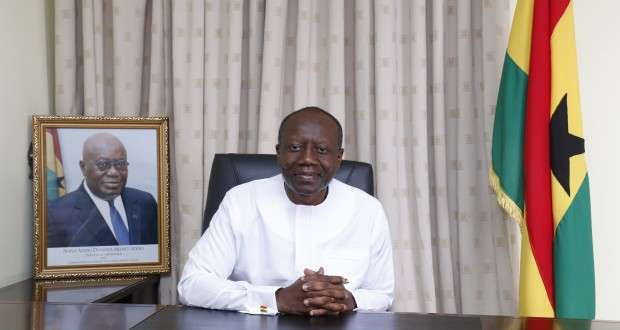Special topics
 Despite the dwindling fortunes of agriculture since the start of commercial oil production some six years ago, the dreaded oil-linked Dutch disease has not set in, Finance Minister, Ken Ofori Atta has assured.
Despite the dwindling fortunes of agriculture since the start of commercial oil production some six years ago, the dreaded oil-linked Dutch disease has not set in, Finance Minister, Ken Ofori Atta has assured.
Dutch disease references problems associated with a rapid increase in the production of natural resources, such as oil and gas, that cause a decline in other sectors of the economy; such that when the resource runs out, the economy becomes worse off.
Mr. Ofori-Atta, asked by the B&FT if the Dutch disease had caught up with the country – given the dwindling contribution of agric to Gross Domestic Product (GDP) – said: “The Dutch disease has not set in. The Dutch disease shows up in two key areas: an appreciation of the domestic currency and movement in the factors of production from the traditional sectors to the ‘new resource sector’. Neither of these has happened.
“In the first instance, the increased forex inflows lead to a strengthening of the local currency. Nigeria experienced this in the 1970s, leading to the non-competitiveness of its agriculture sector, with groundnuts and cocoa production and exports being worse affected. The cedi has been depreciating since 2011, so this obviously does not apply to Ghana.”
The economy grew by 8.5 percent in 2017 – the highest since 2012 when it grew by 9.3 percent, figures released by the Ghana Statistical Service (GSS) for quarter four of 2017 have shown.
However, that growth is largely driven by the oil and gas sector and not the labour-intensive agriculture sector that used to contribute as much as 50 percent of the country’s GDP decades ago. The Acting Government Statistician, Baah Wadieh, acknowledges that: “The mining and quarrying subsector recorded growth of 43.9 percent, and out of this oil and gas recorded a growth of 80.4 percent”.
This is significant, because in Q4 of 2016 the mining and quarrying subsector grew by just 8.9 percent. Boosting the subsector’s growth was the Sankofa Gye Nyame oilfield, which was commissioned in January 2017.
The agriculture sector, which has been the backbone of the country’s economy for decades, has been on the decline for years now. The sector’s contribution to GDP dropped from the 18.9 percent recorded in 2016 to 18.3 percent in 2017.
The Finance Minister acknowledges that though there has been movement in the factors of production from the agriculture to the oil and gas sector, the latter is incapable of absorbing such huge numbers.
“Secondly, there is a movement in the factors of production from agriculture – for example, to the oil and gas sector. Given the skills-set required to move into the oil and gas sector, it is quite difficult to fathom how this could have happened over the past 10 years – when Jubilee was discovered – or the six years since production started.”
He added: “The industry is not so huge as to warrant and accommodate such large-scale labour mobility over the period. The challenges in the agriculture sector over the past few years are down to low investment in the sector due to the liquidity squeeze, rather than the movement of labour, which is the predominant factor, from that sector to the oil and gas sector”.
Agric Financing
Banks in the country still consider the agriculture sector too risky for loans, the Annual Percentage Rates (APR) and Average Interest (AI) report for December 2017 released by the Bank of Ghana has shown.
According to the report, the lending rate to the agriculture sector remains high – as it hit 31.1 percent at the close of 2017.
The report shows that out of the 31 commercial banks in the country, 13 of them have their rates above 30 percent.
Premium Bank tops with rates between 33.7 to 38.7 percent, followed by The Royal Bank with 37.4, and NIB 37.2 percent. Omni Bank and HFC Bank follow with 36.4 and 36.2 percent respectively.
Barclays Bank lends to the sector at between 23.6 and 35.9 percent; First Atlantic 35.8 percent; Stanchart 22 to 34 percent; Fidelity 33.7 percent; UBA 32.9 percent; Energy Bank 32.8 percent; GN Bank 26 to 32 percent; and FBN Bank 31.7 percent.